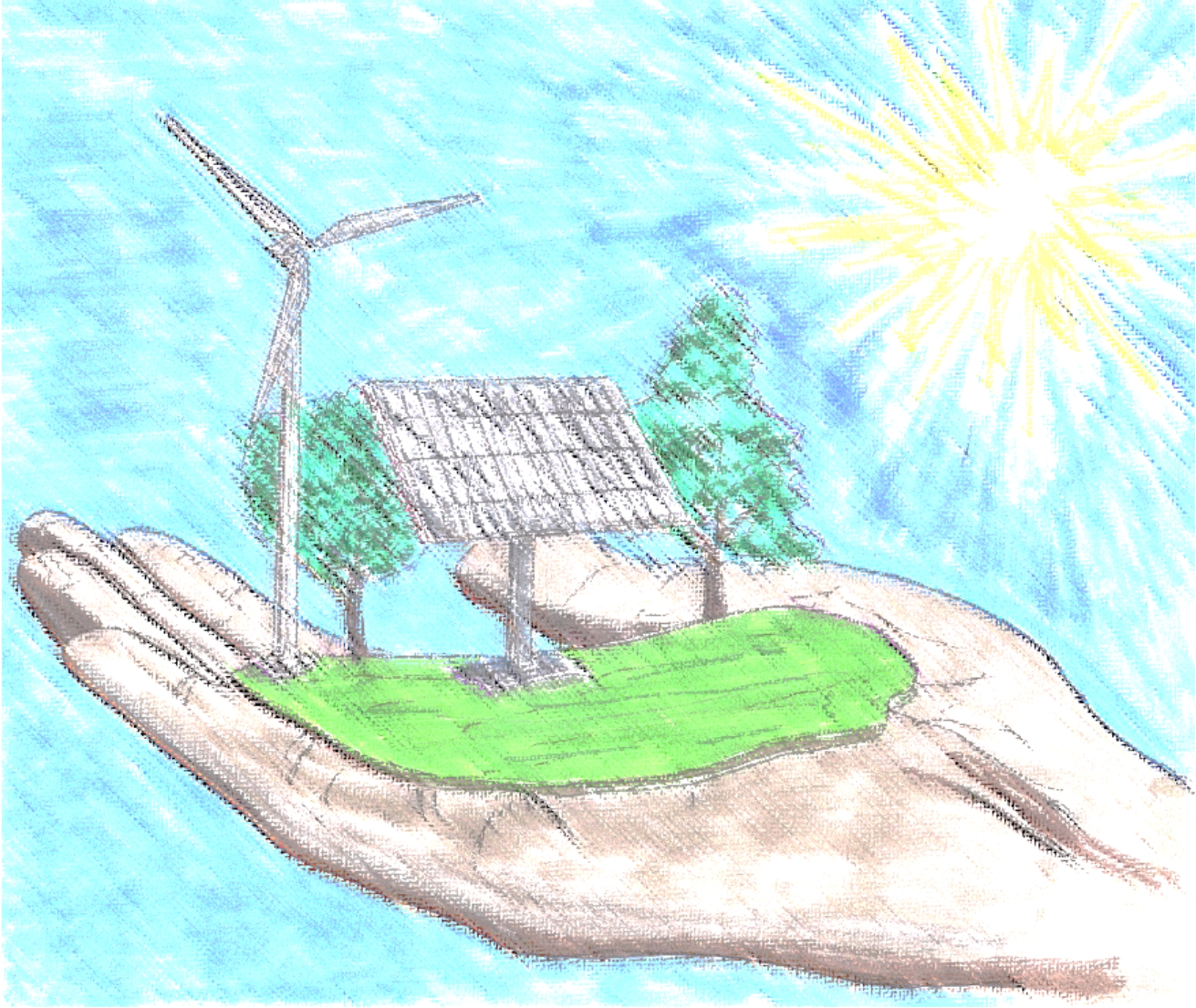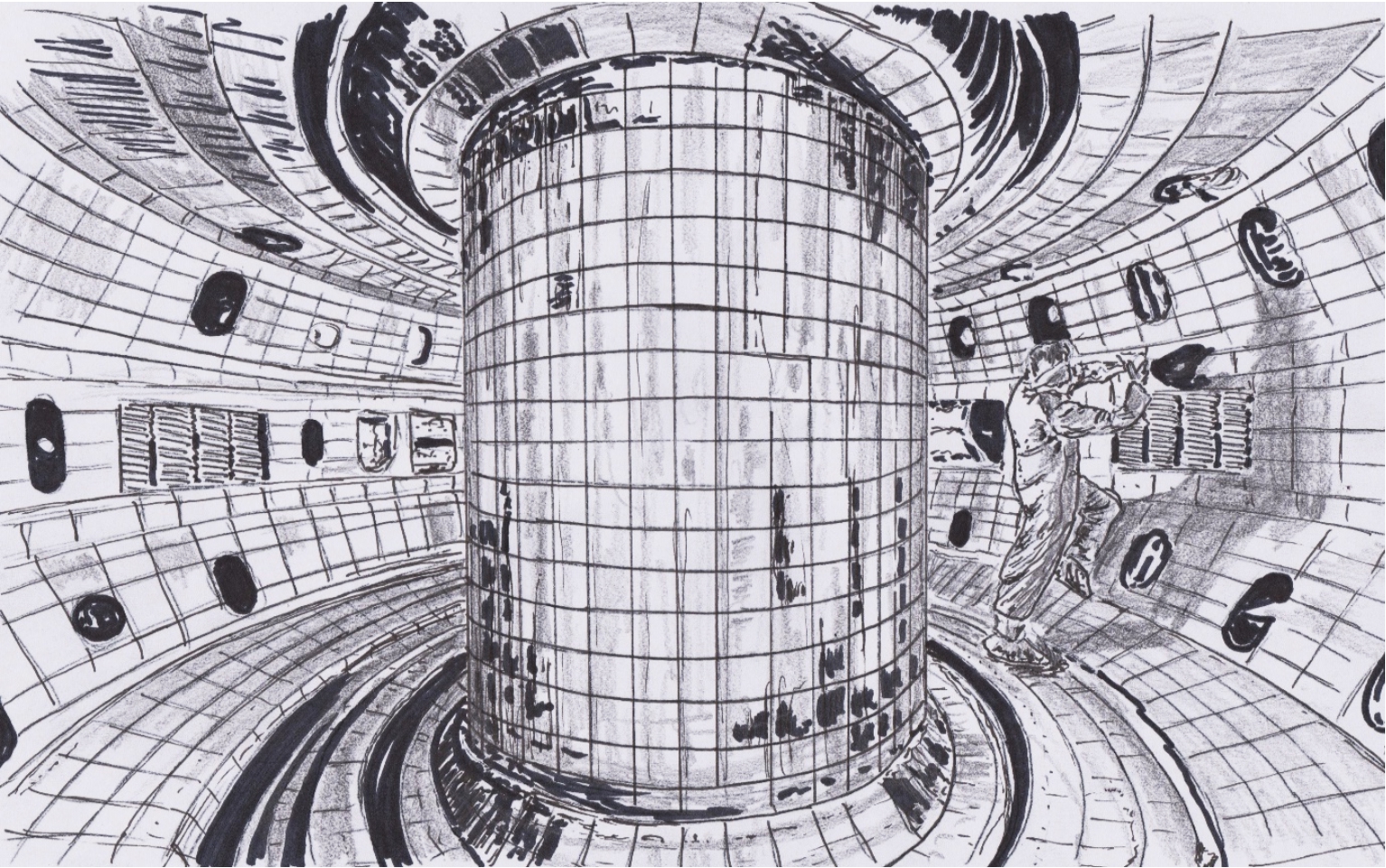I got the power
“All peoples everywhere should have free energy sources.”
- Nikola Tesla
One thing that is needed in the field of implementation of advanced technology is a lightweight source capable of delivering large amounts of power. Throughout most of history, the only power sources available to man were his own muscles and those of domesticated/trained animals. Some hundreds of years ago, mill owners implemented windmills or water wheels for driving their equipment, thereby indirectly harnessing the power of the Sun. In fact, all power sources, except for nuclear power, ultimately rely on the Sun as their energy. The Industrial Revolution was the era where fossil fuels began their reign as the dominant power source and that era is only just beginning to come to a close.
One motivator for moving away from fuels such as coal and oil is of course the carbon emission generated by combustion and the associated greenhouse effects of carbon dioxide causing global warming, which was discussed above in some detail.
By the way, the concept that nuclear power does not contribute to global warming is an error, since mining and processing of uranium involves a large and continuous emission of carbon dioxide, not to mention the emissions associated with building and running the actual nuclear power station and transporting nuclear fuel. Also, large amounts of carbon dioxide are likely to be released when attempting to deal with the spent fuel and radioactive waste that the nuclear fission generates. And, of course, the fuel involved, uranium, is like, for example oil, a limited resource and not continuously renewable such as is the case for wind, solar, and tidal power. The 43rd President of the United States George Walker Bush is apparently among those who have made the error of believing that nuclear generation represents a renewable power source (perhaps not surprising when considering other errors he made - such as starting the Iraq War - which is generally considered to have been a gigantic mistake).
This statement is based on the following quote attributed to George: “Obviously, nu-que-lar power is, uh, a renewable source of energy, and the less demand there is for non-renewable sources of energy, like fossil fuels, the better it off it is for the American people.” And this was from the leader of the Free World! Good grief! Actually, in the portrait below he looks like quite a nice guy – in a simple-minded kind of way.
Recently, I was just looking up various quotes by the 43rd President of the United States – there is so much good material there, surely a whole book could be devoted to it; here is one of my favourites:
“The vast majority of our imports come from outside the country.”
- George W. Bush
George W. Bush, who apparently believes that nuclear power is a renewable power source and that the Iraq War was a good idea. (Drawing by the author.)
And what about this for sheer profundity:
“I think we agree, THE PAST IS OVER.”
- George W. Bush
It is undeniably true that nuclear power produces less CO2
per kWh of electricity than traditional fossil fuel generation; but then nuclear also generates some pretty appalling radioactive waste that can
remain a danger to humans for hundreds of millennia. There can be little doubt that such a relatively old-fashioned and dirty power generation technology as nuclear fission can only be viewed as some kind of stop-gap technology and that we can’t look to it as a major power source for the future.
What then, is left to us? Renewables, of course. These technologies have been under-funded and under-exploited over many generations as a result of a pronounced and seemingly unaccountable bias of many people, particularly politicians, towards nuclear power. This may have had its origins in the Cold War, and particularly the race after World War II to be the first nation after America to have a nuclear weapon capability. Uranium reactors do, after all, produce plutonium – which is very well suited to making atomic bombs, but which is also extremely toxic. Plutonium is an artificial metal and it’s one that may have the dubious claim of being the most dangerous material ever to be manufactured.
Regarding renewable power, there is something very laudable about having a power source that does not contribute to global warming and which costs very little to run beyond routine maintenance costs. Devices such as wind turbines and solar panels are, then, making a valuable contribution by feeding into the national grid. While on this subject, I would say it should be much easier for each of us to simply buy one such device from the internet or high street stores, install it at home, plug it in, and start doing our bit for tackling global warming.
Similarly, I spend an hour per day on my exercise bike, finding that when I have finished, the body of the machine has become warm through dissipation of the mechanical energy as heat. It would again make much more sense if I could plug the bike into the mains and have my efforts contribute in a modest way to the nation’s power. It would also be an incentive for me to put in as much effort as possible thereby also helping me to keep in shape – but currently the modest task of retailing such a bike seems to be too much to ask. And of course, if millions of others had the same idea as me, the contribution wouldn’t be modest at all.
Considering the threat we face from global warming, it is inevitable that in the future more use will be made of renewable power generation. Many large companies are of the same opinion; for example, BP is increasing its low carbon investment by 10 times, to around $5 billion a year, and have stated their intention to become a net zero carbon company by 2050 or sooner to help the world get to net zero carbon emission. We have the future in our hands and capabilities and technologies are emerging to enable us to make it a green one.
Our green future is in our hands. (Illustration by the author.)
A reliable supply of electricity is, of course, very important and essential for modern living, but we also need to go beyond this. Specifically, there is a pressing demand for a lightweight power source. Up until recently, we were dependent upon the old lead-acid accumulator technology of the car battery – which has a very
unimpressive power to weight ratio. Things are now, thankfully, finally improving somewhat, with the new types of batteries that are appearing in the latest generations of electric cars. However, even these surely have a long way to go before they reach the power to weight ratio of so antiquated a fuel as petrol.
But what of the future? Electrical power generation does not seem to present a problem, since this can be realised through use of renewables or other non-polluting technologies. Of course, one slight problem with this source of power is that it is often intermittent – there is no guarantee that the wind will be blowing when you happen to want to put the kettle on. Approaches to this in the past have included construction of the Dinorwig power station in Wales, where water is pumped to the top of a mountain when demand is low and then allowed to flow down, generating electricity during periods of peak demand.
The view down toward Dinorwig power station from the slate trail above. (Illustration by the author.)
The problem with this is, apart from it being expensive to build, is that it also tends to be rather expensive to run – friction means that overall it consumes a good deal of electricity itself. One would be lucky to retrieve 80% of the electricity sent for storage, so in the past this meant requiring more electricity to be generated from fossil fuels - hence potentially adding to carbon emissions. This would, of course, be less of an issue in the case of renewable power. Another approach that is rather less wasteful and also able to more quickly respond to demand, would be to store the excess electricity in large scale batteries. Recent battery developments have made this a more realistic prospect than it was in the past, but storage capacities are currently still rather limited. If larger amounts of power are required than could be generated from renewable sources (with storage as required), then we need to look to other methods of electrical power generation. Global warming dictates that we can’t go forward with fossil fuels and, as mentioned, nuclear fission is a relatively polluting technology. But what about nuclear fusion? What indeed. How many years have we listened to the promises of fusion power being viable in the near future, while in reality commercial fusion power does not seem much closer now than it was 40 years ago. But let’s not give up hope, since if fusion could be made to work it would be a truly great power source; here are a few advantages it would offer:
• It’s a clean technology in which atoms of hydrogen are fused, producing only helium – so there are no greenhouse gas emissions. Unlike fission, no long-lived radioactive waste is produced in fusion.
• Safety. Getting the fusion to occur is a rather complicated and difficult process – so there is effectively no possibility of a meltdown.
• Abundant fuel source. A fusion reactor would employ deuterium (a type of hydrogen) and lithium. There is enough of these substances in the world’s oceans to provide the Earth’s population with abundant energy for millions of years…
Fine and dandy. There is just one slight problem: at the moment, it doesn’t work – or at least it doesn’t work in a way that generates
useful power output/electricity. Fusion is the process that takes place in the heart of the Sun and has provided the energy to sustain life on the Earth over the last 5 billion years. It works by fusing light nuclei to form a heavier nucleus, accompanied by releasing bursts of energy (i.e. it’s the opposite of the fission that occurs in today’s nuclear power stations – where energy is released when a nucleus splits into smaller nuclei). In a nuclear fusion power station, a combination of hydrogen gases, deuterium, and tritium would be heated to extreme temperatures (around 100 million degrees Celsius). This causes the gas to become a plasma and for the nuclei to combine to form a helium nucleus and a neutron. One way to control the intensely hot plasma is to use powerful electromagnets. A ring-shaped magnetic chamber designed for doing this is known as a ‘tokamak’. When the extreme temperature is reached, a tiny fraction of the mass is converted into ‘fusion’ energy. When the plasma contains millions of these reactions every second, a huge amount of energy can be produced from a very small amount of fuel. The reason why it does not currently comprise a power source is that up to now the energy produced by the fusion has been considerably less than the energy put into the chamber to heat and contain the plasma (currently the energy out is only up to 70% of the energy in). But this is not for want of trying; some very talented scientists have worked hard on the problem and some progress has been made. For example, JET – the Joint European Torus, at Culham, is the world’s largest tokamak and has produced a world record 16 megawatts of fusion power using deuterium and tritium fuel. Also, General Atomics in San Diego have, since the 1980s, been undertaking fusion research in their DIII-D experimental tokamak fusion reactor.
There are two new fusion developments planned for the UK: STEP - a new UK power plant design activity based on the compact ‘spherical tokamak’ reactor concept, which aims to deliver net electric power output on a timescale of 2040, and the MAST (Mega Amp Spherical Tokamak) upgrade device. There are also a number of international fusion developments. These include: ITER – a large multinational tokamak that is being built in the south of France with the aim of producing 500 megawatts of fusion power, and DEMO – a European
demonstration power station design – which aims to supply fusion electricity to the grid around 2050.
A tokamak fusion reactor operated by General Atomics in San Diego, which has been used in research since it was built in the 1980s. (Illustration by the author.)
Additionally, there are power plant design programmes being developed in various other countries, including China, South Korea, and Japan. Good luck to them all I say! The prospect of clean abundant energy for all our needs is indeed appealing. There is, however, just one cautionary comment that might be worth making. If we were to have access to vast amounts of fusion electricity at very low cost, it is natural that we would wish to exploit it as much as possible. We could, in the winter run as many ‘bar fires’ as we wish, and there would be little incentive to insulate our homes. In warm climates, air conditioners could be used all summer, and in general all manner of electrical heaters and machines could be employed for a wide range of purposes. All these devices would have
one thing in common – they would produce heat (either directly for a heater or through friction in the case of machines). If electricity were truly abundant, the resulting heating could significantly contribute to the warming of the planet. We are all familiar with global warming as being a phenomenon resulting from greenhouse gases such as carbon dioxide and methane in the atmosphere, but up to now we had not considered the possibility of it also being caused by an over-abundance of electrical power. However, all we need is for the world’s tokamak scientists to constantly raise their energy out figure to just above 100% of the energy in, for such an over-abundance to become a real possibility. But, again, I feel the prospect of plenty of useful energy available to help humans in all sorts of ways is an alluring one; it’s just the same as for anything else, i.e. we have to treat it responsibly. Call me scurrilous, but I can’t help wondering whether, if the $5 billion that was put into the Large Hadron Collider (LHC) at CERN had been put into building a very large scale tokamak, we would be now getting significantly more energy out of fusion reactions than we are putting in. It does, however, have to be acknowledged that in 2012 experiments in the LHC provided significant evidence for the existence of the Higgs boson. This is an important development in theoretical physics, which helps to confirm the existence of various other particles. But what practical use is this in confirming fundamental theories of physics? One such theory, which has been popular in recent decades, is ‘string theory’. This essentially suggests that particles are composed of energies that resemble vibrating strings. The particular vibrations of the strings create all the various observed particles and forces, with all matter and forces in the universe being made of these vibrating strings. It might be reasonable to ask whether discovery of the Higgs boson provides evidence that string theory is correct. It may do so to some extent, but according to Scientific American:
“String theory is formulated in 10 dimensions and has other properties that do not hold in our world. It makes no explicit or testable predictions or explanations, and it has no direct connections to Higgs bosons.” So I will just make one comment and then tip-toe away from that one: I have to wonder if it is worth spending so much time and effort on something that “makes no
explicit or testable predictions or explanations”. Whatever the exact situation regarding Higgs and string theory, there is one thing I know for sure: it is a much better idea to spend a few billion dollars on building a particle accelerator, than spending trillions on wars – which, unfortunately, is something man is wont to do.
From this discussion, we can conclude then that economic and clean generation of electrical power on much larger scales than has been seen up to now, for distribution through grids, is certainly possible and should be achievable within the next few decades. However, making such power available to exactly where it is needed, whether moving on the land or at sea or in the air, is a rather more formidable task. One suggestion might be to miniaturise a fusion power station by building a very small tokamak, with an associated miniature power plant. It must, however, be borne in mind that reducing the scale is not as simple as might be at first thought - the volume inside the reaction chamber would decrease in proportion to the cube of the decrease in the linear dimensions. This is the same reason why you cannot simply scale a human up and expect they would be able to function normally – if you made a person twice as tall, their weight would increase by a factor of 8 and, most likely, their legs would break. It also explains why simple scaling comparisons that you sometimes come across are meaningless – an example of this might be: “if you scaled a flea up to the size of a man, it would be able to jump over Nelson’s Column” (in reality, it would not even be able to support its own weight). To summarise, because of scaling considerations and also the laws of physics, it seems very unlikely that we will ever be able to scale down a nuclear fusion reactor power plant to the extent that it could comprise a lightweight mobile power source.
So, what other options might be available to us? Unfortunately, it seems relatively few – unless someone has a brilliant idea that enables a dramatic breakthrough in the future that provides new functionality in this area. One possibility might be to employ high power radio beams – perhaps in the microwave wavelength, to transfer the needed energy. However, we have to remember that microwaves are capable of cooking humans as well as chicken for
your roast dinner. Consequently, complex networks of high-power microwave beams, that are moving about and tracking the multitudes of people who need them, does not seem to comprise a safe situation – and so probably does not represent a safe and reliable solution for mobile power. What may be much more likely is some form of power storage – such as a battery with a much greater power to weight ratio than is possible currently. (Recent developments in batteries for electric cars have been encouraging and it seems reasonable to believe that this progress will continue.) Not that the power storage has to occur in the form of an electric battery; some other approach may prove practical, such as very high pressure storage of gases that can drive miniature turbines when released, or heating materials such as metal blocks to very high temperatures and then generating electricity from the resulting temperature differential between the metal and the air, using, for example, thermocouples (working on the same principle as the power that keeps those fans spinning on the top of hot stoves). These are just concepts – we can’t specify the details of technological breakthroughs that have not yet occurred – we have to wait for the inventors to do their stuff. It is interesting to note that important advances often accompany dramatic improvements in the performance of materials (for example, in the past, steam engines only became widespread once the metal of their boilers was capable of withstanding high pressure; while in the future power storage devices mentioned above, ultra-high tensile strength will be needed for the material of the pressure container, and excellent thermal/electrical performance will be required for the insulation/thermocouple material). Whatever the exact configuration of the power storage devices of the future, it seems likely that an ability to store energy in such devices at charging stations and then make it available as needed on the move, may well be the most likely solution to the mobile power needs of the future. It may be that to make power readily available across wide regions of the globe would require networks of very large numbers of recharging points – connecting these all to a central power generator using wiring could prove expensive and challenging from an engineering perspective (particularly if they are to be located on
the oceans or at altitude). This may be where the charging by radio/microwaves could be employed – so that the charging point would only represent coordinates in space, with no actual hardware being needed at the point in question. In such a scenario, the storage device would only have to move to a charging point and then employ an antenna to receive the energy. Collimated (highly directional) radio waves could be directed to each charging point from various transmission points (which could perhaps even make use of satellites to relay the transmissions all around the globe). In such a situation, the directions of the high-power radio beam (from transmission point to charging point) would be fixed over time, so they would be much less dangerous than employing dynamic/constantly moving beams.




